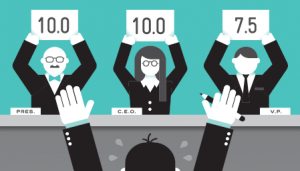
The first generation to integrate computers into day-to-day activities, millennials are soon to dominate the workplace. With noticeably distinct cultural values, when compared to the preceding Gen Xers or Baby Boomers, millennials challenge traditional practices in business and corporate leadership. Millennials have redefined leadership to be inspiring, and making a positive impact.1 How will business culture be affected by this new type of thinking?
Monych (n.d.) explains that millennials lead with a democratic approach, encouraging collaboration, transparency, and openness over the top-down, driven by power and money sort of approach. Technology can cut through the levels to allow the communication structure throughout the organization be like a network rather than a chain of command.3
Millennials prefer a conceptual approach to leadership, therefore encouraging creativity, which can lead to the development of valuable ideas. The crave for challenges and new experiences drives the motivation; changes, failures, and mistakes cannot barricade millennials from trying to achieve their ambitions since they have grown up with a mindset that everything they did was wonderful and everyone contributed to the purpose.3
The effects of the millennials’ approach to leadership can be examined through Hofstede’s model2 for assessing organizational cultures:
Due to experience and making an impact being the driving factor motivation and the millennials’ honesty with a lack of fear for risks and failures, organizations will be goal-oriented and internally driven, that is companies will look beyond obstacles and take greater risks to accomplish its vision and mission. Organizations will become easy-going, open, local, and employee-oriented. Since transparency and empowerment are key characteristics to the millennial approach to leadership, employee issues can be openly discussed and the flatter power structure will allow employees to have an interpersonal relationship with their managers. As work and personal life become heavily integrated, the company will provide a greater care for the welfare of the employees.
Not only do I believe that this type of leadership will enable managers and employees to develop greater trust for each other, I believe that optimism and overlooking obstacles will spark zeal in every employee as more interests of the organization and the employees will align.
Word Count: 353
References
1 Brousell, L. (2015, August 4). How millennials challenge traditional leadership. Retrieved February 4, 2017, from CIO website: http://www.cio.com/article/2956600/leadership-management/how-millennials-challenge-traditional-leadership.html
2 Hofstede, G., Neuijen, B., Ohayv, D. D., & Sanders, G. (1990). Measuring organizational cultures: A qualitative and quantitative study across twenty cases. Administrative Science Quarterly, 35(2), 286-316. http://dx.doi.org/10.2307/2393392
3 Monych, B. (n.d.). Millennials in charge: How they’re changing the workplace [Blog post]. Retrieved from Insperity website: http://www.insperity.com/blog/millennials-in-charge-how-theyre-changing-the-workplace/
Image Source
[Millennials at a conference table]. (2014, April 16). Retrieved from https://www.thindifference.com/2014/04/top-5-leadership-traits-millennials/

